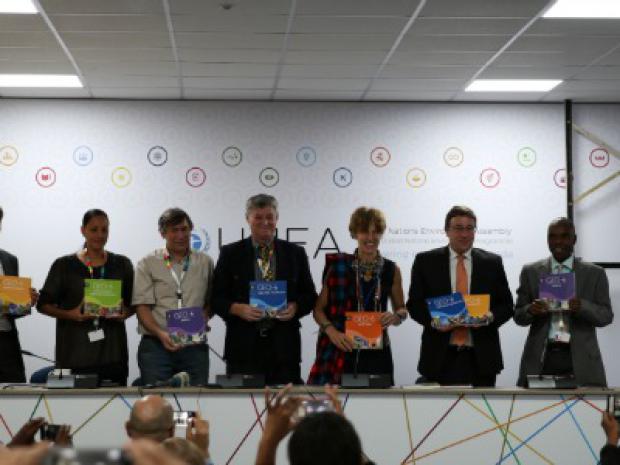Rate of Environmental Damage Increasing Across the Planet but There Is Still Time to Reverse Worst Impacts if Governments Act Now, UNEP Assessment Says
Discussion details

Landmark UNEP Assessment Puts State of the World’s Environment Under the Microscope
Nairobi, 19 May 2016 – The environmental change sweeping the world is occurring at a faster pace than previously thought, making it imperative that governments act now to reverse the damage being done to the planet, says the most authoritative study that UNEP has ever published on the state of the global environment.
Under the title Global Environmental Outlook (GEO-6): Regional Assessments, six separate reports provide highly detailed examinations of the environmental issues affecting each of the world’s six regions: the Pan-European region, North America, Asia and the Pacific, West Asia, Latin America and the Caribbean, and Africa.
Released ahead of the United Nations Environment Assembly, the regional assessments find that the world shares a host of common environmental threats that are rapidly intensifying in many parts of the world.
In almost every region, population growth, rapid urbanization, rising levels of consumption, desertification, land degradation and climate change have combined to leave countries suffering from severe water scarcity. These worrying trends are also making it increasingly hard for the world to feed itself, warn the reports, which involved 1,203 scientists, hundreds of scientific institutions and more than 160 governments.
The assessments, which are based on scientific data and peer reviewed literature, find that there is still time to tackle many of the worst impacts of environmental change, such as the damage to marine ecosystems and the rising level of air pollution, which has become one of the world’s most widespread environmental health risks.
Across the world, climate change, the loss of biodiversity, land degradation and water scarcity are growing problems that need to be urgently addressed if the world is to achieve the goals set out in the 2030 Agenda for Sustainable Development, the reports state.
Pan-European Region:
At the Seventh Environment for Europe Ministerial Conference held in Astana (Kazakhstan) in 2011, ministers committed to establish a regular assessment process for the pan-European region based on a Shared Environmental Information System (SEIS). As a result, the GEO-6 Assessment for the pan-European region will be launched on 08 June 2016 at the eighth Environment for Europe Ministerial Conference in Batumi, Georgia. At the conference the assessment will serve to inform the discussion on keeping the environment under review for the pan-European region.
The GEO-6 Assessment for the pan-European region has been prepared by UNEP and UNECE with support from the European Environment Agency (EEA). The assessment is backed by a large body of recent, credible scientific evidence and has been developed through a robust intergovernmental and multi-stakeholder process including regional-wide consultations to set the priorities for the assessment. Hundreds of experts from the region including from governments, academia and key stakeholders in the region have participated in its development.
For more information please contact: Isabelle Valentiny: Isabelle.VALENTINY@unep.org
About GEO-6
The regional assessments will inform the Global Environment Outlook (GEO-6), which will be released before 2018 and will provide the most authoritative assessment of the state, trends and outlook of the global environment.
Log in with your EU Login account to post or comment on the platform.